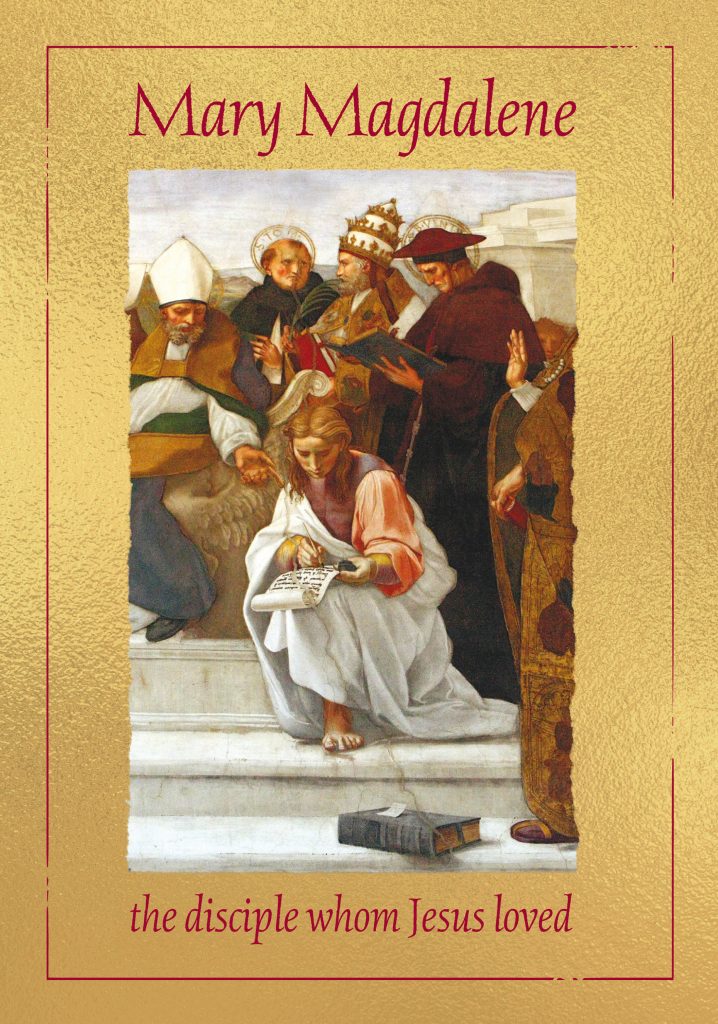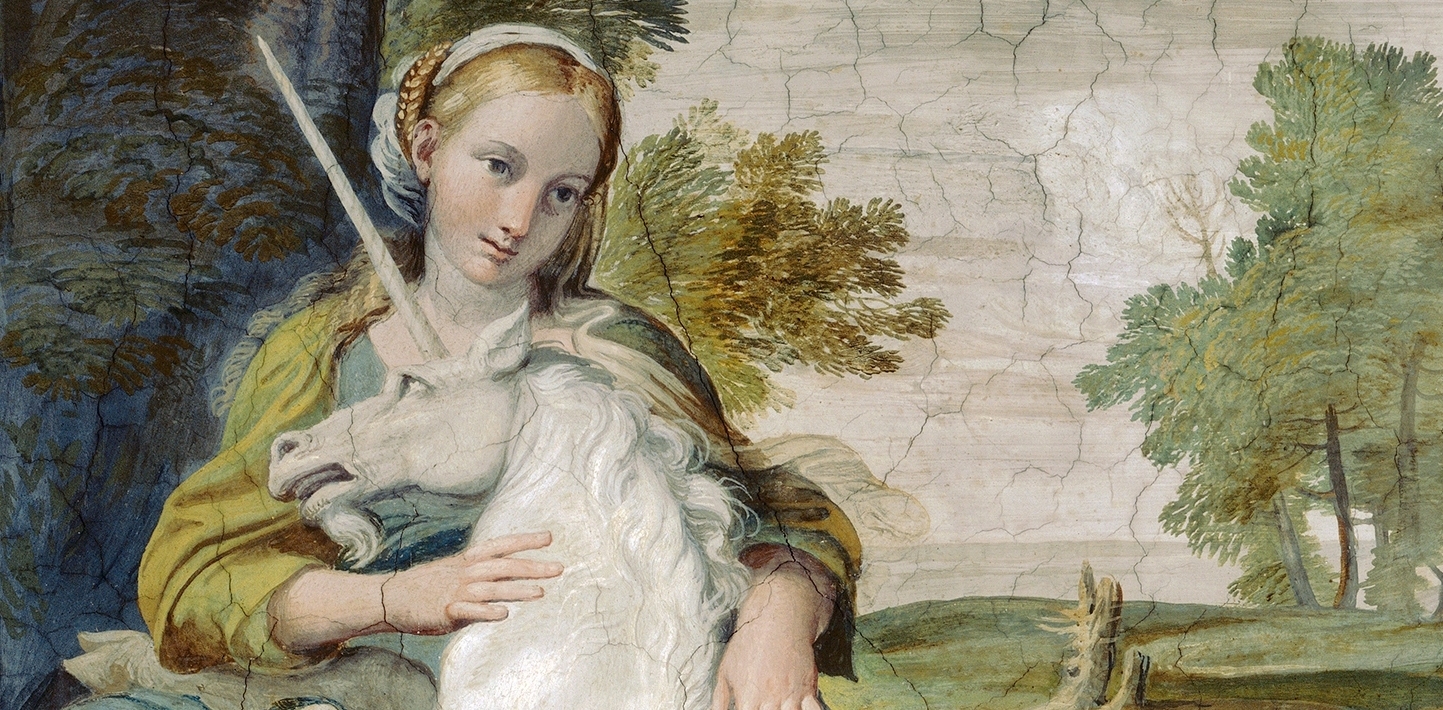The unicorn can be found in you!
Everyone loves the unicorn: adults and children, artists, poets and historians. We are fascinated by this animal. Did it really exist? What is the origin of the myths and legends in which the unicorn plays a leading role? The answers to these questions are related to another great mystery: the kundalini energy in our pelvis.
In most cultures and spiritual traditions, we only find the knowledge about our potential for God-realization packed in symbolism and metaphor. Frequently, mainstream religion prevented open communication about esoteric knowledge, and it was not something to be shared with the masses anyway, who might not appreciate it anyway and might run off with it in the wrong way.
Symbolism is the ideal way to safely transmit spiritual knowledge to the sincere spiritual seeker. Alchemy is an example of a tradition that has elevated this to a true art. Alchemical knowledge is mainly put on paper in the form of illustrations (emblems). It is immediately clear to an insider what an emblem means. For the uninitiated, the wondrous, surreal depictions are one big mystery.
In fact, spiritual knowledge is so well hidden that many people still think that alchemical emblems represent chemical formulas for turning base metals into gold. However, the vast majority of emblems are about the process of kundalini awakening, as a way to realize the inner gold!
Audiences react in disbelief when I say this. The kundalini is seen as an oriental concept that was not known in the Christian regions. Nothing could be further from the truth. Through the ages, kundalini symbolism can be found in many artistic expressions and iconographies, also in our part of the world. I have written books on this. The unicorn is a wonderful example.
At the center of this alchemical emblem is sitting the god Hermes/Mercury with his staff, the caduceus, the universal symbol for a kundalini awakening. With his left hand Hermes points at his lap; the place where the water basin is located that he points at with his staff. The rose bush and the water are both metaphors for the kundalini energy. In the background we see two beasts fighting: the battle within each of us between our higher and lower nature. The horse with the wings represents the transformed animal energies. The color red in alchemy refers to the completed Magnum Opus (God Realization).
The animal in man
Digging deep enough into the sacred writings of spiritual traditions, one finds that they are surprisingly unanimous on the “problem” of our animal drives. They get in the way of our ability to experience the divine.
Intellectually, we may be the crowning glory of creation, but most of our urges are animalistic. In other words, there is essentially not much difference between what we see on National Geographic and the news. Traits such as greed, aggression, lust, jealousy, boasting, selfishness and herd behavior are animal tendencies.
These impulses of our so-called “lower nature” are rooted in our bodies, a product of our evolution from the animal kingdom. However, man also has a divine potential, connected to our soul. To fully realize the divine, our animal (abdominal) energies must be purified and sublimated (raised to the higher chakras).
Man as a hybrid creature: part human and part dog/wolf. These two halves want to go in opposite directions, which gives us constant inner struggles. Illustration from: The Chronicle of Nuremberg, 1493.
The depiction of a transformation process
Suppressing our animalistic tendencies is not the solution to realizing our divine potential. We need these primal forces, especially the sexual energies, in order to realize God. The spiritual work is to gain mastery over these forces. The kundalini fire helps us with this by burning everything that stands between God and man. The unicorn symbolizes this transformation process.
In the language of symbolism a horse represents our emotions and animal urges. This also the origin of the proverbial “prince on a white horse”: the ideal man has purified his animal tendencies (the color white) and under control (riding the horse).
The unicorn is also white, and the long, spiraling horn on its forehead represents the kundalini energy which, along with the animal energies, has ascended to the sixth chakra, opening the third eye.
We find similar symbolism in Hinduism. The raising of the purified animal energies is depicted here in an inventive way (similar to the unicorn’s horn). The animal energies are ‘fed’ from the head. Note also the small standing cobra, in the lower left corner: a universal symbol for the awakened kundalini.
The virgin and the unicorn
Ancient stories about the unicorn communicate the importance of sublimation. According to the legends, the unicorn can only be captured by placing a virgin under a tree. The animal lets himself be lured by the virgin and will then fall asleep on her lap. A tree is a universal metaphor for the awakened kundalini energy that has ascended to the crown chakra. For this to happen, the sexual energy must be preserved (the virgin) for the spiritual awakening process. The animal in the belly (womb) of man must “fall asleep.”
The legends also say that the horn of the unicorn can purify poisoned water and cure diseases. Purification and healing are both aspects of the kundalini. The unicorn is also said to be able to detect hidden water sources. Water is a universal metaphor for the divine energy in our pelvis (see the alchemical illustration above).
The unicorn can only be captured by placing a virgin under a tree.
Meeting the unicorn
A unicorn only exists in the inner world of man. We will meet this beautiful animal when we long to be with God. Special exercises to awaken the kundalini energy are not necessary. Do not be afraid, you are not required to lead an ascetic life, you just have to make the right choices. Sensory and sexual gratification will lose their appeal once you have tasted the divine. If a unicorn spontaneously appears in a dream or meditation, then you know you are on the right track!
In Christian art the unicorn has been used to communicate forbidden esoteric knowledge. In this painting by Moretto da Brescia (1530) we see Saint Justina with a unicorn. The pinecone on the saint’s robes, below the animal’s horn, is a reference to the pineal gland, which is activated when the kundalini arrives at the sixth chakra.
This article was published in Spiegelbeeld magazine (July/Aug ’20)
Copyright Anne-Marie Wegh 2020
Anne-Marie Wegh the author of the book “Mary Magdalene, the disciple whom Jesus loved”







